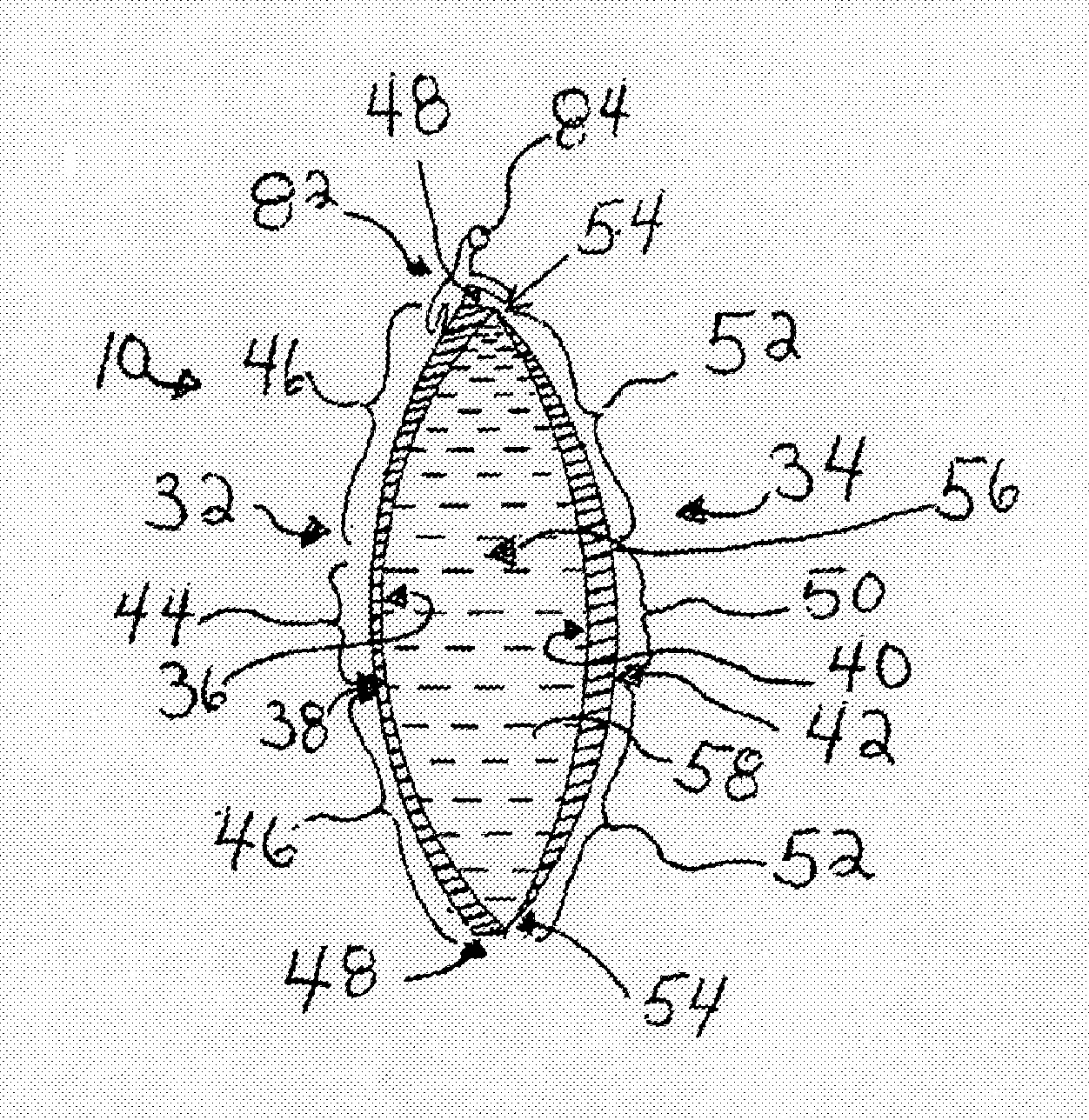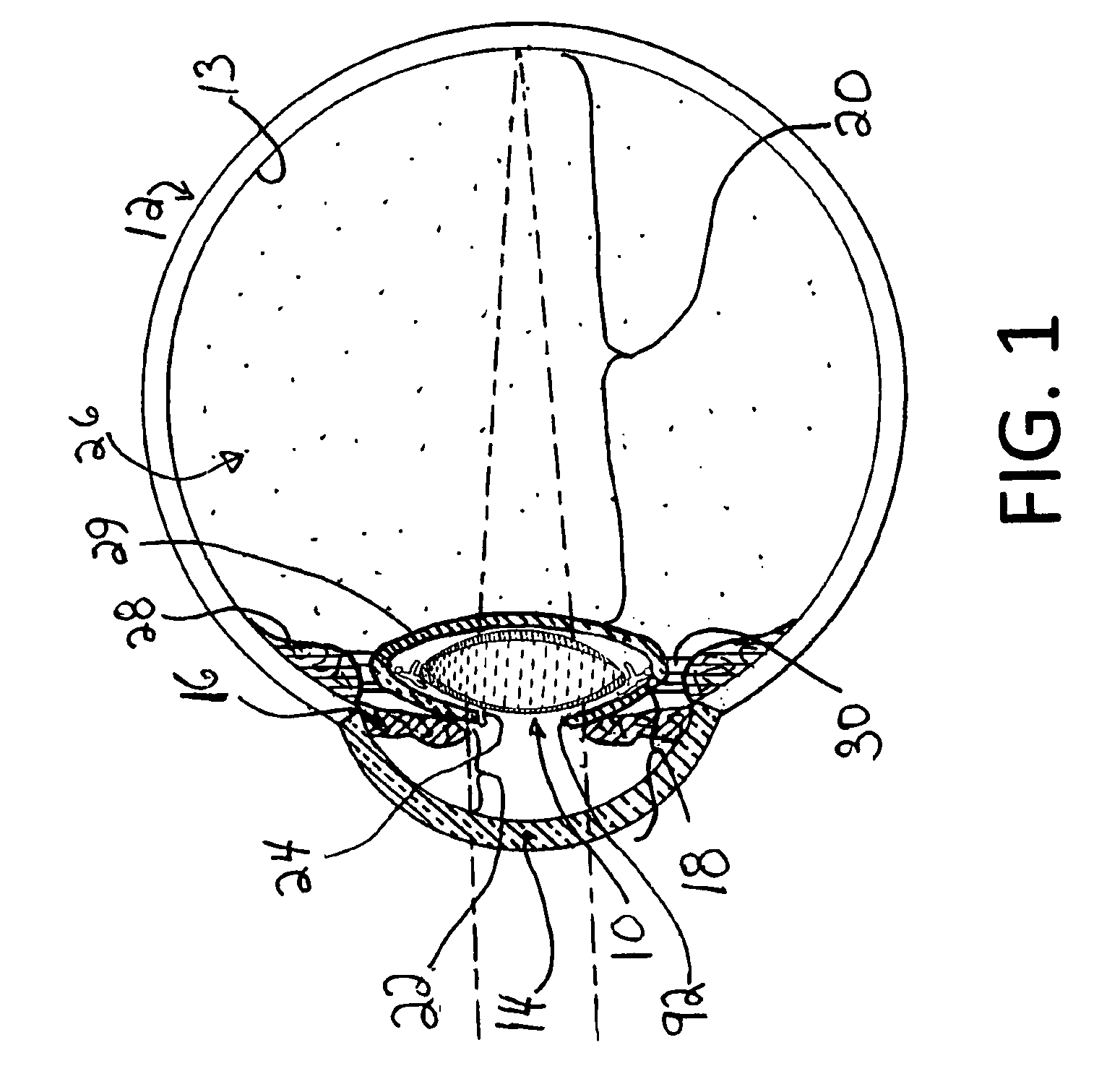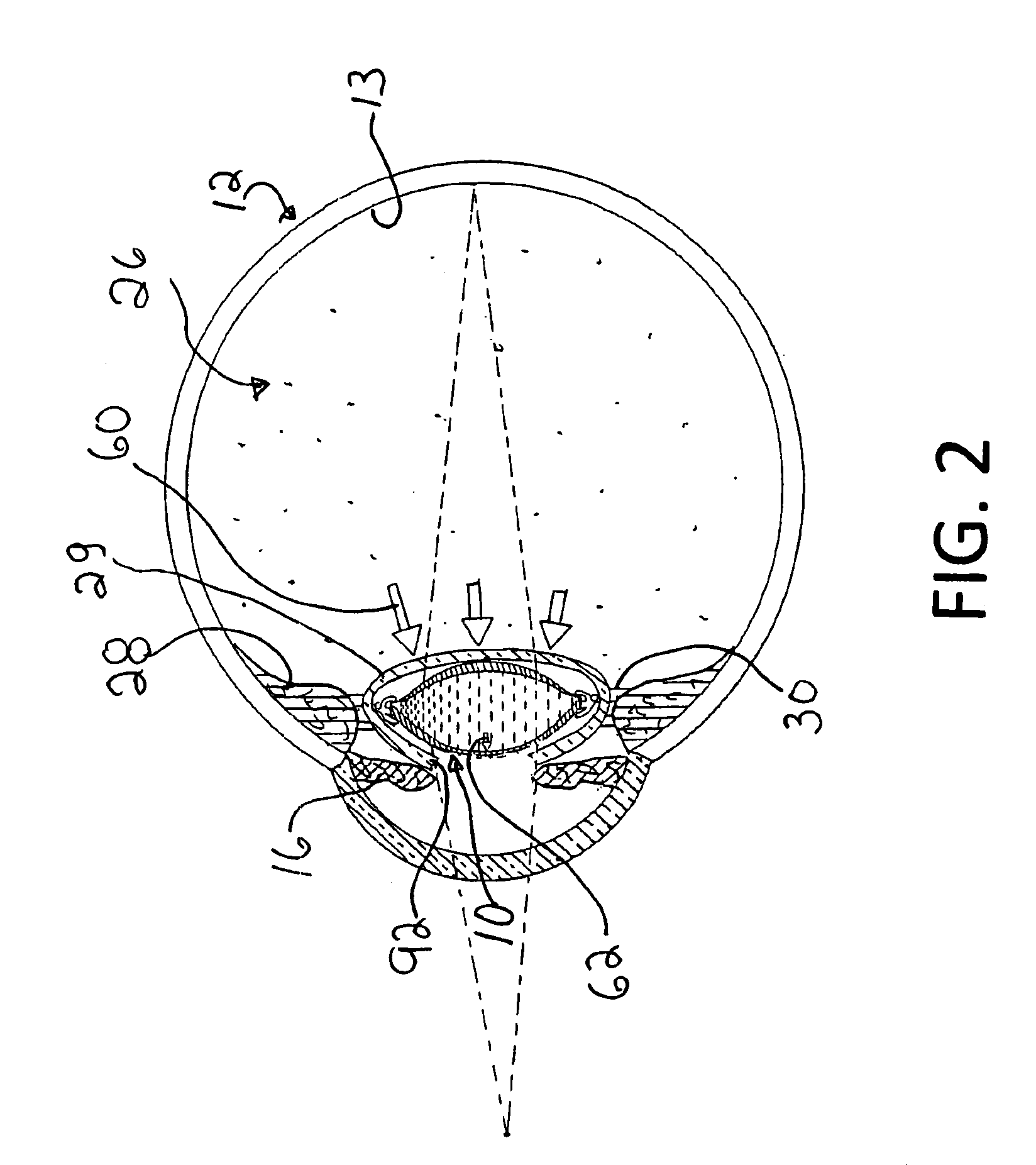Accommodative intra-ocular lens
a technology of intraocular lens and ocular surface, which is applied in the field of intraocular lens, can solve the problems of difficult to explain the pressure increase using the helmholtz theory, the surface of the lens to flatten, and the optical power of the lens to decrease, and achieves the effect of a large range of accommodation
- Summary
- Abstract
- Description
- Claims
- Application Information
AI Technical Summary
Benefits of technology
Problems solved by technology
Method used
Image
Examples
Embodiment Construction
[0056]Referring to FIG. 1, there is shown an accommodative intra-ocular lens in accordance with an embodiment of the present invention, generally designated by the reference numeral 10 and herein referred to as an IOL. The OIL 10 is shown implanted in a mammalian eye schematically illustrated and generally referred to by the reference numeral 12.
[0057]As is well known, the eye 12 includes a cornea 14 and a pupil (not shown) located in the middle of the iris 16. Behind the iris 16 normally sits a crystalline natural lens (not shown) which has been replaced by the IOL 10.
[0058]The lens 10 divides the eye 12 into an anterior segment 18 extending from the cornea 14 to the lens 10 and a posterior segment 20 extending from the back edges of the lens 10 to the retina 13. The anterior segment 18, itself, is divided into an anterior chamber 22 extending from the cornea 14 to the iris 16 and a posterior chamber 24 extending from the iris 16 to the lens 10. The anterior segment 18 is filled wi...
PUM
 Login to View More
Login to View More Abstract
Description
Claims
Application Information
 Login to View More
Login to View More - R&D
- Intellectual Property
- Life Sciences
- Materials
- Tech Scout
- Unparalleled Data Quality
- Higher Quality Content
- 60% Fewer Hallucinations
Browse by: Latest US Patents, China's latest patents, Technical Efficacy Thesaurus, Application Domain, Technology Topic, Popular Technical Reports.
© 2025 PatSnap. All rights reserved.Legal|Privacy policy|Modern Slavery Act Transparency Statement|Sitemap|About US| Contact US: help@patsnap.com



